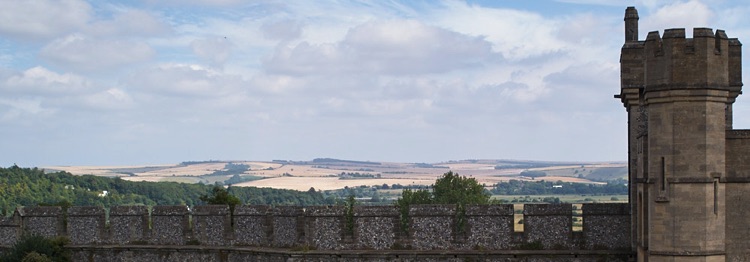1066
Year
The Battle of Hastings
Event
1062
Earl Harold swore an “oath” to accept Duke William as his lord.
1065
Earl Tostig, Harold’s brother and Earl of Northumbria was outlawed by the people of Northumbria. Tostig had “Despoiled of life and land and all those he had power over”. King Edward accepted the peoples plea and appointed Morcar as Earl of Northumbria.
May 1066
Earl Tostig mounted raids up the south coast of England, but was driven north by Harold, where he was finally defeated by Edwin, Earl of Mercia and Morcar, Earl of Northumbria.
25 September 1066
King Harald of Norway landed with a large raiding army near York, where he was joined by the ever persistent Tostig. Harold marched north with his housecarls joined forces with with Morcar, Earl of Northumbria and Edwin, Earl of Mercia. Together they inflicted a decisive defeat on Harald and Tostig at the hard fought battle of Stamford Bridge on 25 September. Both Harald and Tostig were killed in the battle.
29 September 1066
Duke William landed in Sussex near Pevensey and made camp in the old roman fort these. Harold marched his housecarls south again and reformed his army with his brothers, Earl Leofwine and Gyrth, Earl of East Anglia.
14 October 1066
The Battle of Hastings was fought at Senlac hill, near the village of Battle, Sussex. The sides were fairly evenly matched in terms of size. The English army was primarily foot soldiers, a combination of housecarls (trained soldiers) and an larger proportion of fyrd (part time soldiers) raised from local land owners. The norman force included foot soldiers, archers and cavalry. All William's army were trained soldiers, including many mercenaries who had flocked to his cause with promises of the land and property William would take from the English.
King Harold had positioned the English in a good defensive position on Senlac hill and despite some fierce fighting, the Normans could not break the Saxon shield wall. Seeing their chances of victory through feat of arms of slipping, the Norman nobles conferred and decided their only chance of winning was to trick the English into breaking their shield wall. The Normans staged a retreat. The English believing that William had fallen, broke their defensive line and charged down the hill to pursue the fleeing Normans. This was exactly what the Normans had hoped for allowing the Normans to bring their cavalry into play.
The English fought on, but with shield wall broken the Norman amoured, mounted knights were able to cut down the English foot soldiers. Harold fought on to the end, when he was surrounded by four Norman knights and eventually cut down by multiple Norman blows. Harold and his brothers Leofwine and Gyrth were all killed. Harold’s dead body was hacked to pieces by the Norman knights. William ordered Harold's body to be buried near the seashore. While the site of Harold’s burial is not certain, some believe it is buried at Bosham.
Shocked by the bloodshed of the battle, the pope ordered William to build a monastery as atonement for his sins. William later founded Battle Abbey near the site of the battle. It should be noted that William was fighting under the papal banner and it is quite likely that the “price” of the battle was negotiated prior to the battle itself.
Aftermath
The Battle of Hastings was the end of the Godwine line and for the English saxon nobility in general. The northern earls Edgar, Edwin and Morcar later submitted to William later at Berkhamsted. To secure his ascendency and maintain his suppression of the English population William built many castles over England. William returned to Normandy in the early spring of 1067, leaving England under the control of his brother Odo and William FitzOsbern. William stopped at Pevensey on his return trip to meet with his supporters and to give away more English land.

Sussex Timeline


